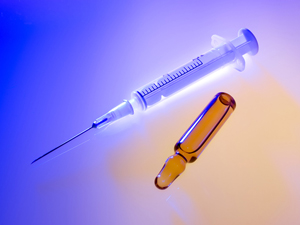Make sure your inoculations are brought up to date well before departure, and ensure that you have certificates for those that are required by immigration authorities. For example, some countries require yellow fever vaccination certificates for people who have been in infected areas in the previous few months. Other requirements may also exist, but most inoculations are recommended rather than required. You might consider protecting yourself from rabies, cholera, typhoid, polio, hepatitis, tetanus, Japanese encephalitis etc. Medical advice should be sought. A routine dental check-up is a sensible precaution when travelling beyond the developed world. Also make sure that you have sufficient supplies of any drugs or medical supplies upon which you normally rely. A copy of the relevant doctor’s prescription demonstrates your genuine personal need. In the case of unusual drugs or insulin injections, a doctor's letter explaining your medical condition is a worthwhile precaution. Generally, drugs should be packed in their original labelled containers in hand luggage where they remain in your care. However, I putting at least an additional week’s supply in a separate bag is a good idea. This is useful if your return is delayed, and gives time to acquire replacements if the main supply is lost.
 |
| Public domain image by leonardini - freeimaes.com |
Details of the global malaria situation would fill a book – one which the Society is not qualified to write. However, anti-malarial prophylactics are generally recommended for visits of a few weeks or months to affected areas. Medical advice must be sought to determine the correct drug for a particular individual and region. When asked about the worrying side-effects of some prophylactics, doctors sometimes comment that a possible side-effect of malaria is death! By far the best protection against malaria is to avoid being bitten by the female Anopheles mosquitoes that transmit the disease. They are most active during the hours of darkness, so make sure you sleep inside a well-maintained mosquito net. The single-point suspension design is ideal for travellers. It should have an extremely fine mesh and be chemically impregnated before departure. Take a couple of lengths of strong cord sufficient to erect a net in any room or environment. Use as anchor points the curtain rails, window fittings, bed posts or whatever is available. It can also be worth carrying a small mosquito net designed to fit over a wide-brimmed hat. This is a real asset in heavily infested areas, such as in rainforests or near stagnant water. The final line of defence is formed by portable electric mosquito killers, mosquito coils and insect repellents. DEET is an excellent product but should not be applied directly to the skin above a concentration of about 10%. The pure form can however be used to impregnate absorbent wrist and ankle bands. This approach is usually effective.
Travel with two first-aid kits. The main one should contain everything a traveller reasonably anticipates needing including sterile syringes and needles (in sealed medical packs), broad-based antibiotics, small bandages and adhesive plasters, antiseptic, antihistamine tablets, motion sickness tablets and wrist-bands, a water purification kit and treatment for minor burns, stomach disorders, diarrhoea and dehydration. Other items such as condoms or birth control pills may be added if relevant, and women may be well advised to carry adequate sanitary supplies. A much smaller secondary kit should be carried in a day-pack or camera bag. It contains diarrhoea and headache remedies, small bandages, adhesive plasters, antiseptic, toothpicks etc, and is intended to serve only until the main kit is accessible.
Suitable clothing, a hat, generous fluid intake and sunscreens provide essential protection from the harmful effects of heat, humidity and ultra-violet radiation, including sunburn, prickly heat, heat exhaustion and heat stroke. This is true for everybody but particularly relevant to those from temperate or higher latitudes who are not accustomed to such conditions. A lightweight, broad-brimmed hat protects the head, face and neck, and a long-sleeved shirt and trousers protect the arms and legs. Socks should be worn with open shoes. Observe how local people dress and make additional allowance for vulnerable skin.